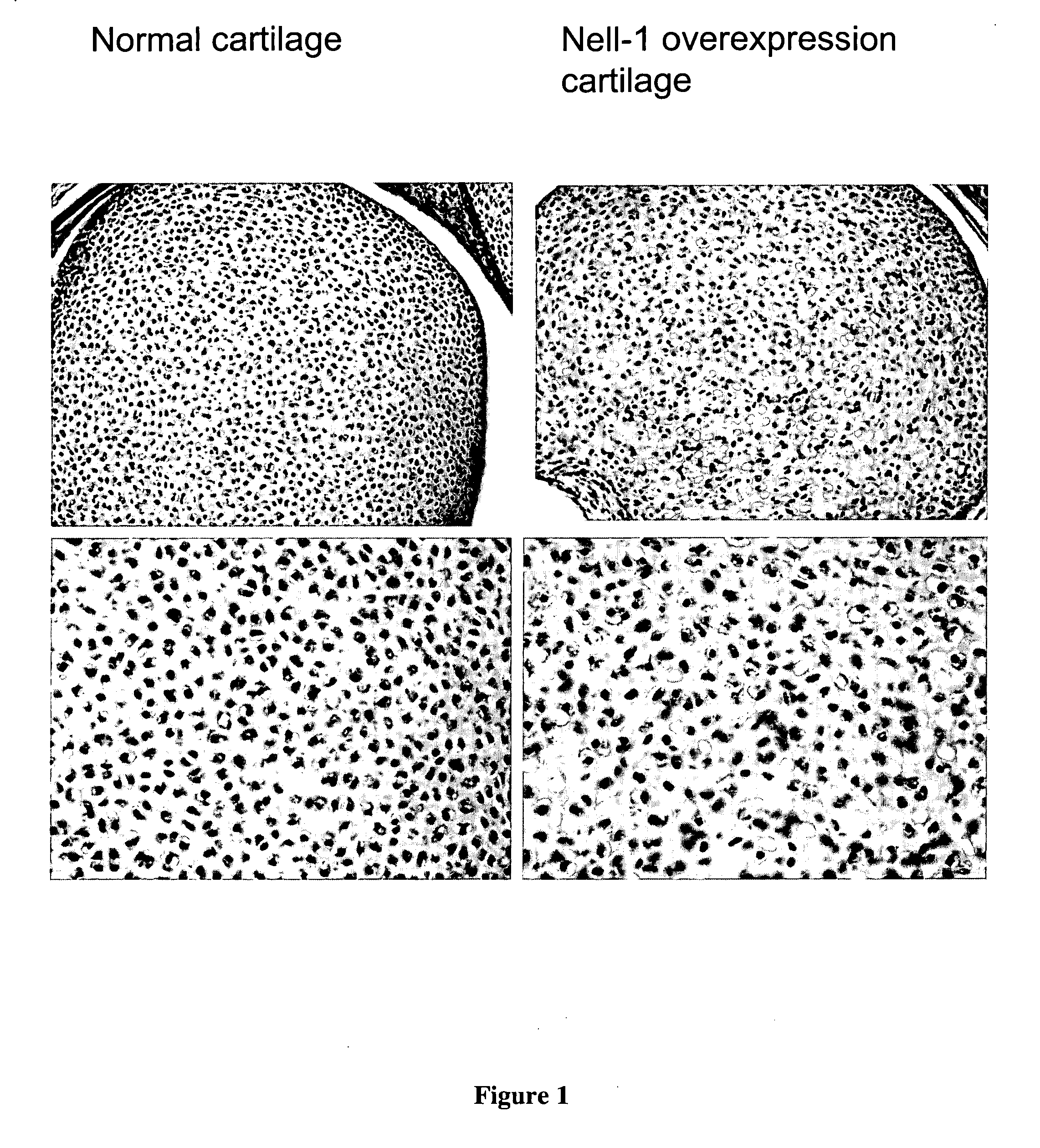Composition for cartilage
a technology of cartilage and composition, applied in the direction of angiogenin, prosthesis, peptide/protein ingredients, etc., can solve the problems of high wear resistance, low friction, articular cartilage, etc., and achieve the effect of promoting cartilage generation and cartilage generation
- Summary
- Abstract
- Description
- Claims
- Application Information
AI Technical Summary
Problems solved by technology
Method used
Image
Examples
examples
[0137] The following examples are offered to illustrate, but not to limit the claimed invention.
[0138] An injectable device containing NELL (with or without cells) that can be directly injected into spinal discs to promote cartilage formation. A disc nucleus replacement device impregnated with NELL is designed to replace the inner portion of the vertebral disc (the nucleus) or both the inner and outer portion of the disc. An injectable device containing NELL (with or without cells) that can be directly injected into the various joint spaces (e.g., knee, temporomandibular joint, wrist) or implanted arthroscopically or openly into various joint spaces.
example 2
Cartilage Differentiation, Maturation and Hypertrophy Without Necessarily Mineralization
[0139] NELL1 transgenic overexpression mice were created with the rationale was that NELL1 overexpression transgenic mice would exhibit altered intramembranous or endochondral bone formation. The invention was tested with F2 progeny from NELL1 transgenic mice. Histology from various forms of NELL1 overexpression mice has demonstrated increased cartilage differentiation, maturation, and hypertrophy without necessarily mineralization in both hyaline cartilage areas (FIG. 1) and fibrocartilage areas (FIGS. 2A-2F).
[0140] Goat auricular cartilage was minced to 1×3 mm pieces and digested with 0.25% trypsin / 1 mM EDTA at room temperature for 30 min, followed by 3mg / ml collagenase II (Sigma, St Louis, Mo., USA) digestion with shaking at 37 C for 6 h. The cell suspension was filtered through a 70 mm strainer and the chondrocytes were then pelleted by centrifugation. After washing with PBS, the cells were...
PUM
| Property | Measurement | Unit |
|---|---|---|
| wavelength | aaaaa | aaaaa |
| temperature | aaaaa | aaaaa |
| temperature | aaaaa | aaaaa |
Abstract
Description
Claims
Application Information
 Login to View More
Login to View More - R&D
- Intellectual Property
- Life Sciences
- Materials
- Tech Scout
- Unparalleled Data Quality
- Higher Quality Content
- 60% Fewer Hallucinations
Browse by: Latest US Patents, China's latest patents, Technical Efficacy Thesaurus, Application Domain, Technology Topic, Popular Technical Reports.
© 2025 PatSnap. All rights reserved.Legal|Privacy policy|Modern Slavery Act Transparency Statement|Sitemap|About US| Contact US: help@patsnap.com



